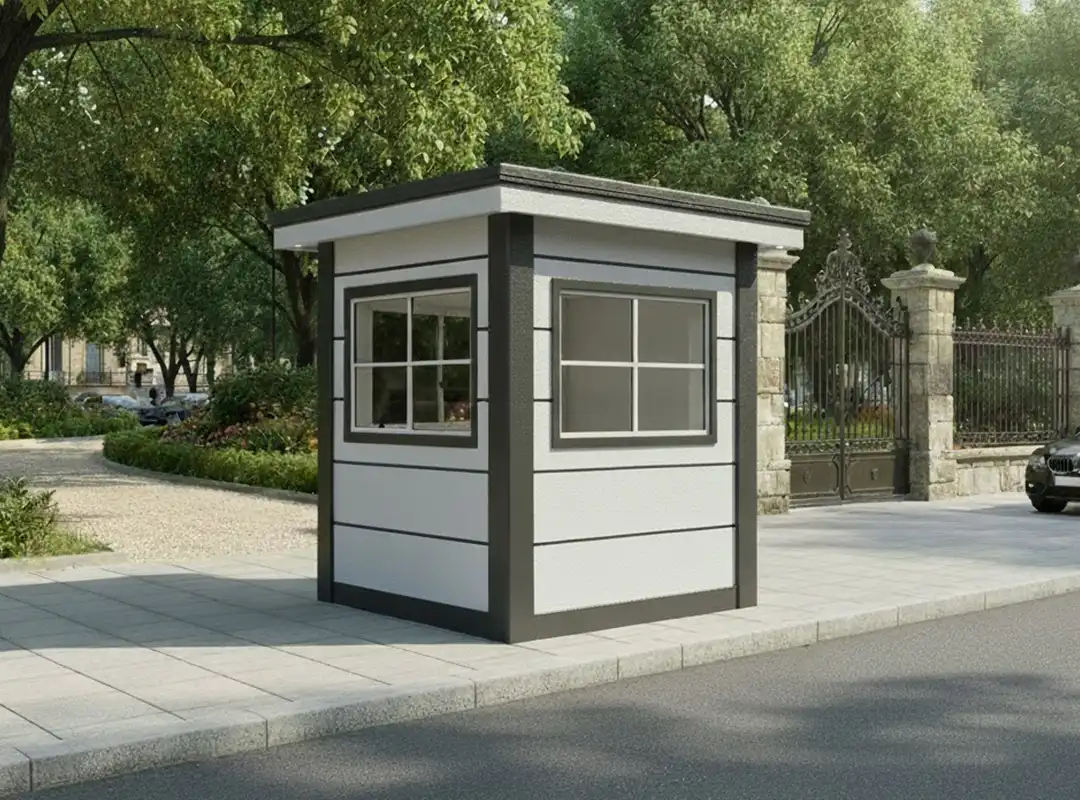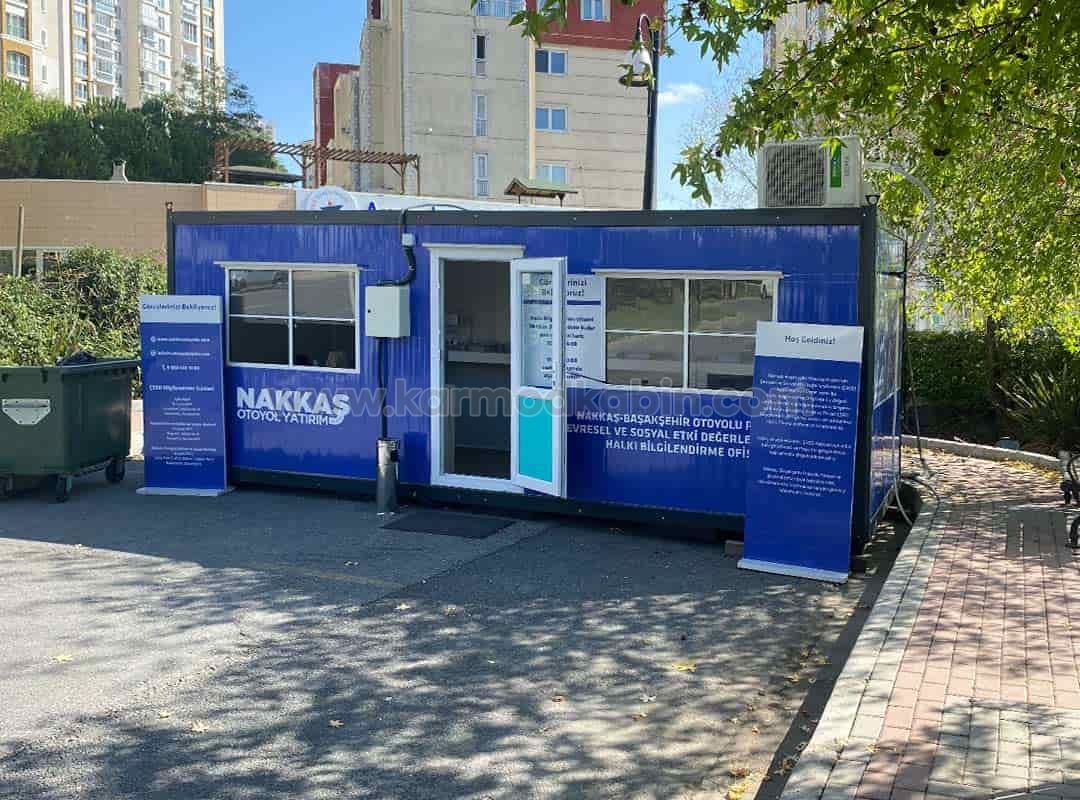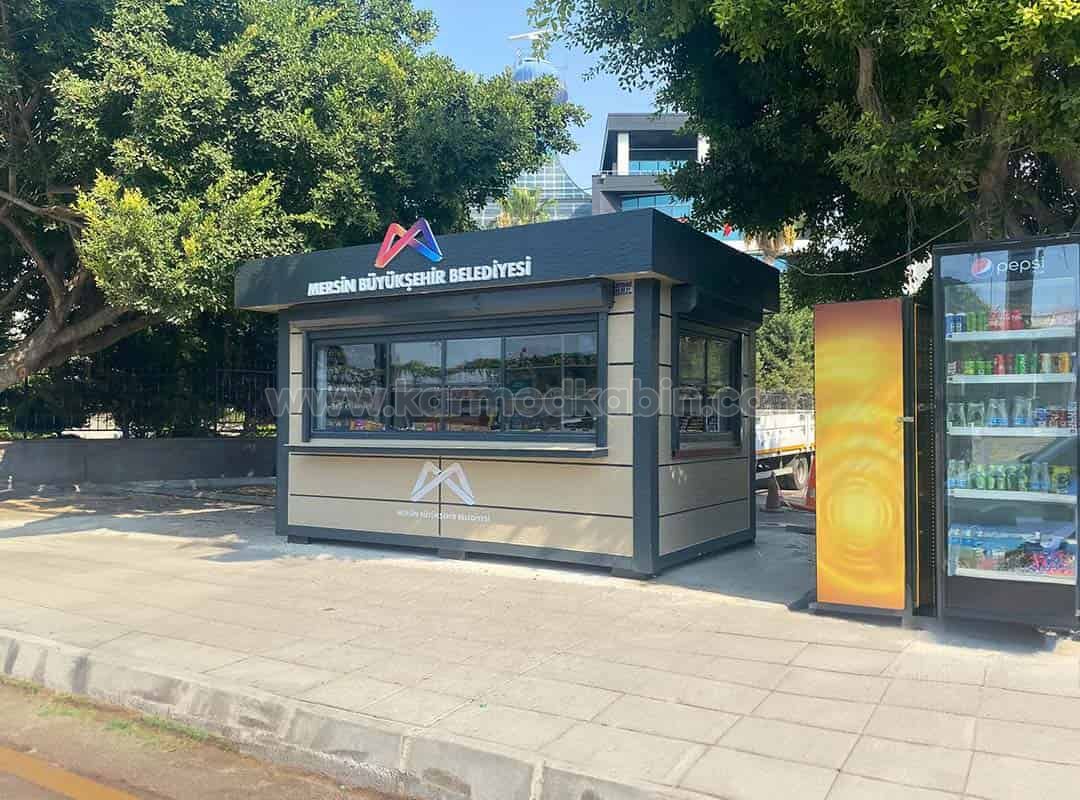
Across the world, municipalities are facing the challenge of providing flexible, cost-effective, and sustainable infrastructure for rapidly evolving urban environments. Traditional construction, while reliable, often falls short when cities need quick, temporary, or mobile solutions. This is where portable cabins step in-offering modular, customizable spaces that can be installed, relocated, and repurposed within days instead of months.
Portable cabins have become an essential component of modern municipal planning. From administrative offices to sanitation units, they serve as efficient tools that allow local governments to respond swiftly to public needs without heavy investment or construction delays. Built from durable, weather-resistant materials and equipped with energy-efficient systems, today’s portable cabins meet the same comfort and safety standards as permanent buildings-sometimes even surpassing them.
For municipalities aiming to maximize budget efficiency, ensure public service continuity, and embrace sustainable urban practices, portable cabins represent not just temporary fixes but strategic, future-ready infrastructure. They combine practicality with innovation-making it easier for cities to stay adaptive, functional, and human-centered in a constantly changing world.
As cities continue to grow and evolve, municipalities are under increasing pressure to expand public services quickly and efficiently. Urban populations are rising, public spaces are becoming more dynamic, and emergencies demand faster responses than ever before. Traditional brick-and-mortar structures, while permanent, often require long construction timelines, high budgets, and complex permitting processes-limitations that hinder the ability of municipalities to act promptly.
Portable cabins, on the other hand, offer a revolutionary approach to urban infrastructure. They can be installed within days, customized for any function, and relocated when needs change. This flexibility allows local governments to create additional space for offices, healthcare, education, or social services without disrupting city operations. Moreover, in areas facing rapid development or environmental challenges, portable cabins provide a temporary yet reliable solution to maintain essential services while larger projects are underway.
As municipalities worldwide prioritize efficiency, sustainability, and mobility, portable infrastructure has become a cornerstone of modern urban planning. It enables cities to adapt to population shifts, support community engagement, and ensure that no public service is left behind.
Municipalities operate in an environment where speed, flexibility, and cost-efficiency determine the success of public services. Portable cabins meet all these needs by providing instant infrastructure that can be relocated, expanded, or modified with minimal disruption. Unlike traditional buildings, they require no deep foundations and can be installed on almost any terrain, from urban squares to rural zones. This adaptability allows municipalities to respond rapidly to community demands-whether it’s a temporary administrative office, a mobile clinic, or a security checkpoint.

Key Advantages for Municipal Applications:
Another reason portable cabins are so well-suited for municipal use is their cost control advantage. With reduced labor, shorter construction times, and minimal maintenance needs, local authorities can allocate funds more effectively across multiple public projects. Furthermore, modern portable cabins are built to high standards of durability and energy efficiency, incorporating insulation, ventilation, and eco-friendly materials that ensure long-term use.
These features make portable cabins not just a short-term alternative, but a strategic investment in urban resilience. For municipalities striving to keep up with growing public expectations, portable cabins represent a smart way to combine practicality, sustainability, and design efficiency.
One of the most practical and widespread uses of portable cabins in municipalities is the creation of temporary administrative offices. These modular spaces enable local governments to maintain service continuity during building renovations, relocations, or urban redevelopment projects. Instead of halting operations, municipalities can quickly set up functional offices equipped with electricity, internet, heating, and cooling systems-providing citizens with uninterrupted access to essential public services.
Portable administrative cabins are also ideal for seasonal or project-based departments such as tax registration centers, public works teams, or election coordination units. Their modular design allows easy expansion as staff or operational needs grow. Beyond practicality, modern cabin designs can be customized with branding, accessible entrances, and sustainable features that reflect a municipality’s professional image.
These adaptable office spaces not only enhance efficiency but also showcase a forward-thinking approach to public administration. By utilizing portable structures, municipalities demonstrate a commitment to flexibility, cost-conscious governance, and citizen-centered service delivery.
Public health and safety are at the heart of municipal responsibility, and portable cabins have become essential tools in supporting these services. From mobile health screening stations to vaccination centers, first-aid units, and safety monitoring offices, portable cabins provide quick, hygienic, and fully functional environments where citizens can receive vital care without waiting for permanent facilities to be built.
During emergencies such as pandemics, heatwaves, or natural disasters, municipalities can deploy these cabins within hours, ensuring rapid access to healthcare and safety resources. Each unit can be equipped with running water, electricity, air conditioning, and sanitation systems, transforming them into reliable micro-clinics or wellness points. Portable health cabins are also ideal for remote or underserved areas where fixed healthcare infrastructure is limited, extending municipal reach and accessibility.
Beyond healthcare, portable safety cabins serve as control stations for security personnel, traffic management teams, and event safety operations. Their mobility allows them to be placed strategically in public spaces, parks, or construction zones, strengthening overall urban safety. In every scenario, these cabins help municipalities act swiftly and efficiently-protecting both people and public trust.
Municipalities play a vital role in fostering education and community interaction, and portable cabins offer the perfect environment for both. These versatile units can be transformed into temporary classrooms, training centers, or youth workshops, enabling local authorities to provide learning opportunities wherever they’re needed. Whether used for continuing education programs, cultural activities, or digital literacy courses, portable classrooms ensure that no community is left without access to essential educational spaces.
Portable cabins also promote community engagement and inclusivity. They can serve as local information centers, social meeting hubs, or public consultation spaces where residents interact with municipal representatives. Their quick installation allows cities to create flexible areas for art exhibitions, cultural festivals, or vocational training-initiatives that strengthen social bonds and foster a sense of belonging.
By combining mobility with function, these cabins give municipalities the ability to bring education and culture closer to people. They make it possible to revitalize underused spaces and adapt to the changing social needs of modern communities-all while maintaining affordability and sustainability.
Cleanliness and hygiene are fundamental to the quality of life in every municipality, and portable sanitation cabins play a critical role in achieving this standard. From urban parks and construction zones to public events and transportation hubs, municipalities rely on these units to provide safe, hygienic, and accessible sanitation facilities for residents and visitors alike. Modern portable cabins are designed with high-quality materials, ventilation systems, and easy-clean surfaces, ensuring long-term durability and user comfort.
Municipalities increasingly use portable toilets, showers, and handwashing stations to maintain hygiene in areas with limited infrastructure. These cabins can be connected to local water and sewage systems or operated independently with built-in tanks, making them versatile for both temporary and remote installations. Furthermore, ADA-compliant models ensure accessibility for all citizens, reinforcing inclusivity in public spaces.
By investing in portable sanitation solutions, municipalities demonstrate a commitment to public health, dignity, and environmental responsibility. Efficient waste management, odor control, and eco-friendly technologies-such as water-saving systems-help reduce maintenance costs while supporting sustainability goals. Portable hygiene cabins are more than utilities; they are a visible reflection of a city’s care for its people and environment.
In times of crisis, speed and organization are everything-and portable cabins provide municipalities with the agility they need to respond effectively to emergencies. Whether facing floods, earthquakes, wildfires, or public health emergencies, these cabins can be deployed rapidly to serve as command centers, medical aid units, communication hubs, or temporary shelters. Their mobility and structural resilience allow them to operate in challenging conditions where permanent buildings may be inaccessible or damaged.
Equipped with essential utilities such as power, lighting, water connections, and climate control, portable cabins ensure uninterrupted service delivery during critical operations. They can function as coordination offices for rescue teams, temporary housing for displaced residents, or even mobile information centers that guide citizens during disaster recovery efforts.
Beyond emergency response, municipalities also use these cabins for preparedness planning and training simulations, ensuring that response teams can act efficiently when real crises occur. Portable units offer the flexibility to be repositioned as needed, creating a ready-to-use safety network throughout the city. In essence, they embody resilience in motion-helping municipalities safeguard lives, maintain order, and rebuild with confidence.
As cities worldwide embrace greener policies, sustainability has become a top priority in municipal planning-and portable cabins are evolving to meet these environmental goals. Modern designs now feature eco-friendly materials, energy-efficient systems, and renewable power sources, making them a smart choice for municipalities aiming to reduce their carbon footprint. These cabins prove that mobility and environmental responsibility can coexist beautifully.
One of the most notable advancements is the integration of solar panels, LED lighting, and smart energy management systems that reduce electricity consumption and operating costs. Walls and roofs can be built with recyclable materials and superior insulation, ensuring year-round energy efficiency. Some models even incorporate rainwater harvesting systems or greywater recycling to minimize water waste.

Eco-friendly portable cabins not only support environmental initiatives but also reflect a city’s commitment to innovation and green governance. They can be used as sustainable offices, community hubs, or public sanitation units, allowing municipalities to showcase environmental leadership in every corner of urban life. For forward-thinking cities, these cabins represent a vital step toward a cleaner, smarter, and more sustainable future.
Every municipality has its own unique identity and operational needs, which makes design flexibility one of the greatest advantages of portable cabin solutions. Unlike traditional buildings with fixed layouts, portable cabins can be fully customized in terms of size, function, and interior configuration. Municipalities can adapt these units to serve as administrative offices, information kiosks, medical stations, classrooms, or even cultural hubs-all within the same modular framework.
Customization extends beyond functionality. Cities can personalize the aesthetic and branding of each cabin to match their public image, incorporating municipal logos, color schemes, and signage. Accessibility features such as ramps, wide doors, and climate control systems can be integrated seamlessly to ensure comfort for every citizen. For projects in specific climates, materials and insulation levels can be adjusted to withstand local weather conditions, from coastal humidity to dry desert heat.
This level of adaptability empowers municipalities to create fit-for-purpose infrastructure that aligns perfectly with both community expectations and long-term strategic plans. By blending flexibility with thoughtful design, portable cabins become not just temporary solutions, but tailor-made public assets that elevate the efficiency and image of modern city management.
For municipalities operating within strict budgets, portable cabins deliver unmatched financial efficiency. Compared to conventional construction, they require significantly less labor, time, and raw materials-resulting in lower upfront costs and faster project completion. This allows local governments to allocate resources to multiple community initiatives at once, rather than committing to a single expensive permanent structure. The modular nature of portable cabins also means they can be expanded, repurposed, or relocated whenever urban priorities change, ensuring every investment remains useful for years to come.
Beyond the initial savings, portable cabins offer exceptional long-term value. Their robust steel structures and high-quality insulation make them durable in all climates, reducing maintenance and repair costs over time. Energy-efficient systems further lower operational expenses, while their mobility means that no structure ever goes to waste-municipalities can relocate or redesign existing units instead of starting from scratch.
This combination of economic practicality and functional longevity makes portable cabins a strategic asset for public infrastructure planning. They allow municipalities to do more with less-expanding public services, adapting to new challenges, and investing sustainably in the future of their communities.
As cities evolve into smarter, more connected ecosystems, portable cabin technology is becoming a cornerstone of future-ready urban planning. Municipalities are increasingly integrating smart systems-such as IoT sensors, automated lighting, and remote energy monitoring-into portable cabins to enhance efficiency and data-driven decision-making. These innovations allow city officials to monitor occupancy, air quality, and energy consumption in real time, improving sustainability and reducing costs.
Portable cabins also fit seamlessly into the modular logic of smart city design, where adaptability and responsiveness are key. They can function as temporary smart hubs, digital information kiosks, or energy-efficient community offices that evolve alongside urban development. When linked with solar energy systems, smart grids, and water-saving technologies, they become an integral part of sustainable city infrastructure.
Looking ahead, portable cabins are set to play a central role in creating resilient, mobile, and technology-enabled public spaces. They offer municipalities the power to test new urban solutions, pilot digital projects, and scale infrastructure quickly-all while minimizing environmental impact. In the era of smart cities, portable cabins are no longer just temporary buildings; they’re modular innovations that embody flexibility, intelligence, and sustainability.
Building efficient, sustainable, and community-oriented infrastructure requires the right partners who understand municipal needs. Working with experienced portable cabin manufacturers ensures that every project-whether it’s an office, sanitation unit, health post, or educational space-is designed with precision, safety, and functionality in mind. Expert producers can customize cabins to meet local regulations, environmental conditions, and long-term operational goals, giving municipalities confidence in both quality and performance.
Collaborating with specialists also means gaining access to advanced materials, smart technologies, and modular innovations that enhance comfort, energy efficiency, and design aesthetics. From solar integration to accessibility features, professional manufacturers bring expertise that turns simple structures into fully equipped municipal assets. Municipal leaders can rely on these partnerships to ensure on-time delivery, transparent budgeting, and seamless project management.
If your municipality is ready to expand its public services with adaptable, eco-friendly infrastructure, now is the time to partner with a trusted portable cabin expert. Transform your vision into a tangible solution-functional, flexible, and built for the future of smart, sustainable cities.
Empower Your Municipality with Smart Portable Cabin Solutions
Your city deserves infrastructure that grows as fast as your community’s needs. With our custom-designed portable cabin solutions, municipalities can expand services, improve efficiency, and reduce costs-all while promoting sustainability and innovation.
Whether you need mobile offices, health units, sanitation facilities, or community hubs, our expert team delivers turnkey solutions built for long-term municipal use. Every cabin is engineered for durability, energy efficiency, and compliance with local standards.
Let’s build the future of urban services - flexible, sustainable, and ready for every challenge.